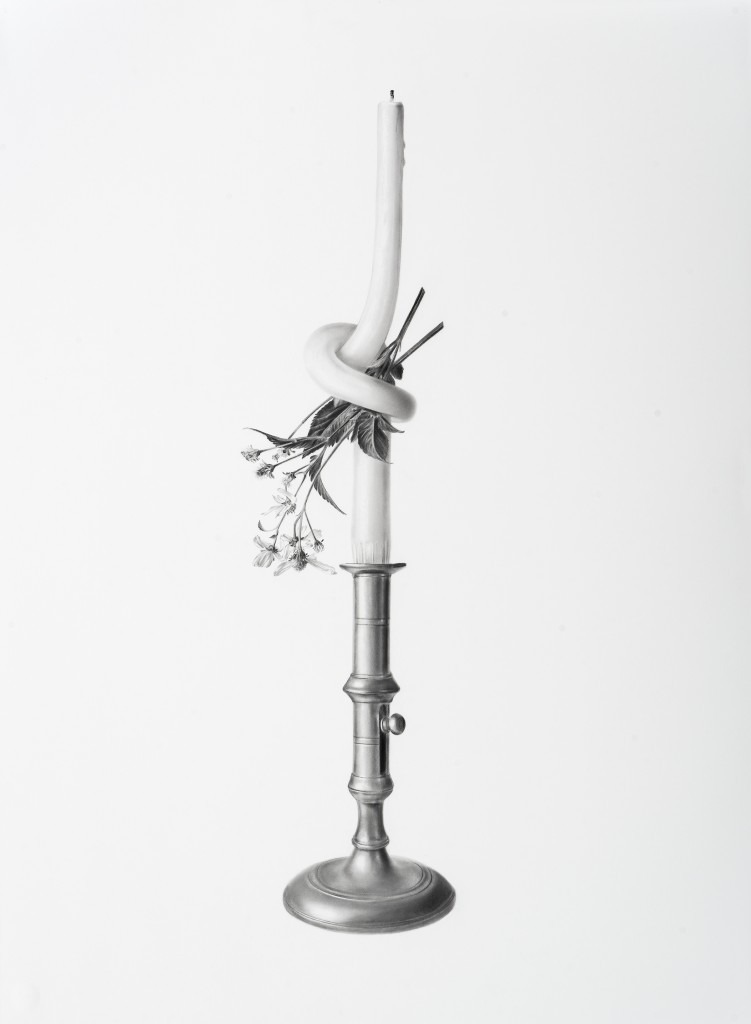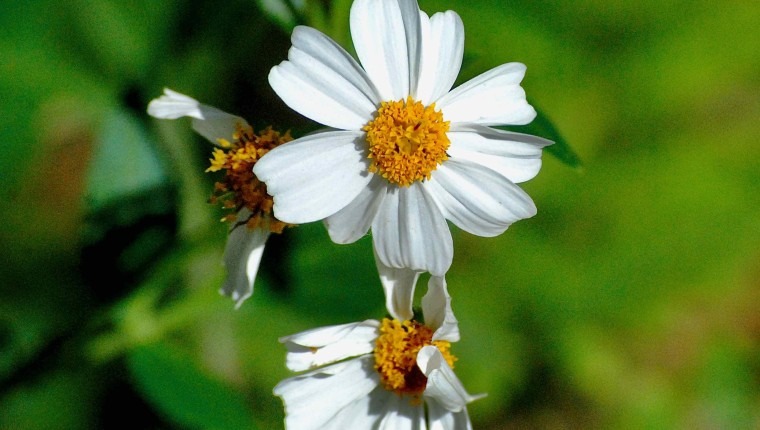
For this drawing I created a still life with a handful of Spanish needle tied up in the knot of a taper candle. Spanish needle often finds itself labeled as a weed—a nuisance that disrupts the uniformity of well-kept lawns. Yet, beyond its reputation as an unwelcome intruder, Spanish needle holds a rich ecological significance as a native plant of Florida.
The 20th century witnessed the rise of suburbia, where manicured lawns became emblematic of status and suburban idealism. This cultural shift was further propelled by mass marketing campaigns by lawn care companies, cementing the belief that a pristine lawn was synonymous with prosperity and a well-kept home.
However, amidst this pursuit of suburban perfection, we overlook the ecological benefits of plants like Spanish needle. Not only does it provide crucial habitat and food for pollinators, but it is also edible, boasting a nutrient profile akin to kale, a darling of the modern wellness movement.
Kale, once relegated to decorative displays on Pizza Hut buffet bars, underwent a transformation propelled by savvy PR marketing. It emerged as a symbol of wellness, despite its reputation for being challenging to digest. The relentless promotion of kale as a superfood has elevated its status, turning it into a badge of health-consciousness and dietary sophistication.
Yet, this obsession with a handful of trendy superfoods belies a deeper issue: the alarming decline in the diversity of our food sources. Shockingly, a mere fifteen species provide us with 90% of our dietary calories, reflecting a dangerous homogenization of our diets. As our population burgeons, our reliance on a limited range of crops exacerbates concerns about food security and resilience in the face of environmental challenges.
In reevaluating our perception of plants like Spanish needle and kale, we confront broader questions about our relationship with nature and food. Can we transcend the superficial allure of manicured lawns and trendy superfoods to embrace a more diverse and sustainable approach to landscaping and nutrition? By recognizing the intrinsic value of “weeds” and fostering biodiversity in our diets, we take a crucial step towards cultivating resilience and harmony within our ecosystems and ourselves.
This drawing will be on view from May 9th to July 21st for the Creative Pinellas Emerging Artists exhibition.



